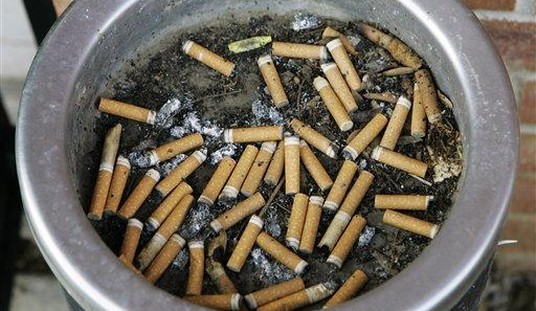The Gulf oil spill is terrible, but it could become much, much worse and soon.
The threat comes in the form of a hurricane moving over the spill. If a hurricane’s violent winds track over the oil slicks this season, we will witness a natural and economic calamity that history has never recorded anywhere or anytime. We will literally be in oil-soaked uncharted waters, suffering the first ever “oilicane.”
A Category One hurricane — the scale ranks them from one to five — has maximum sustained winds of 74 to 95 miles per hour near the eye. A Category Five hurricane has maximum sustained winds of 156 to 200 miles per hour. The difference between the two storms is gigantic, and non-linear. A Category Five hurricane will cause 250 times more damage than a Category One. In other words, there are hurricanes, and then there are monster hurricanes.
Tropical Storm Alex could become a hurricane over the southwestern Gulf of Mexico this week, however the wind currents in that region do not favor the storm coming anywhere near the oil spill. The more likely track is towards northern Mexico or southern Texas later this week.
Looking forward, the water temperature in the Atlantic Ocean is running as warm as the record setting season of 2005, and this is significant. Warmer water means more heat and humidity over the tropical ocean to fuel hurricanes. Just as a car needs gasoline to fuel its engine, a hurricane needs hot, humid air. A hurricane is a gigantic atmospheric engine — the warmer and more humid the air it breathes in, the faster its pistons pump and the stronger its winds become. And warmer water not only creates more hurricanes, it makes more intense ones.
The 2005 season produced a record 15 hurricanes.
Oil now continues to gush from the bottom of the Gulf, and some is washing up on shores. Presently, the good news is that most of the oil is confined to coastal areas. The bad news is what might happen if a moderate to large hurricane rides over the spill.
The winds of a hurricane are so strong that the normal interface between ocean and atmosphere disappears. The winds generate large waves, spray is blown off the top of the waves, and spray mixes with the air. After a short time, there is no real boundary between ocean and atmosphere — they become one! If a large hurricane moves over the spill, this chaotic mixture will also contain oil. The oil will become airborne and travel with the hurricane.
When a hurricane makes landfall, the winds push the ocean onto the land — this is called a storm surge. The height of the surge on land is dependent on several factors.
The strength of the wind and the rate of forward motion of the storm are critical in determining how much water is forced up onto the land. The diameter of the hurricane will also determine how much water is blown inland — the wider the storm, the more water is pushed in, and over a greater area. If the water is shallow offshore, the surge will be deeper on land. Naturally, the elevation of the land is important as well.
The water off the Gulf Coast is shallow, and the elevation inland is only a few feet. This area is prime territory for devastating and deeply penetrating storm surges.
Should a major hurricane push the spill towards the Gulf Coast, there will be nothing that can be done to stop it. No amount of planning or engineering will help. No number of visits to the Gulf by the president or any other official will stop the inevitable. The storm surge will drive the water, and the oil, miles inland. Everything in its path will be coated in a greasy bath of crude.
Even the wind will have oil in it.
In New England, I have witnessed hurricanes and tropical storms that have blown salt spray many miles inland from the coast. The leaves of inland trees eventually turn brown and fall off. In the case of the Gulf, it will be oil spraying the trees, buildings, and anything else in the way. How far inland this oily mess will blow is anyone’s guess, but it could be unprecedented in its economic and environmental damage.
The recovery period after a hurricane can take years. It was 10 years until some communities fully recovered from Hurricane Andrew in South Florida, though some communities never recovered at all. The New Orleans area is still putting itself back together after Katrina in 2005. The recovery period after an “oilicane” will be hard to forecast, but the human and natural loss could be historic.









Join the conversation as a VIP Member